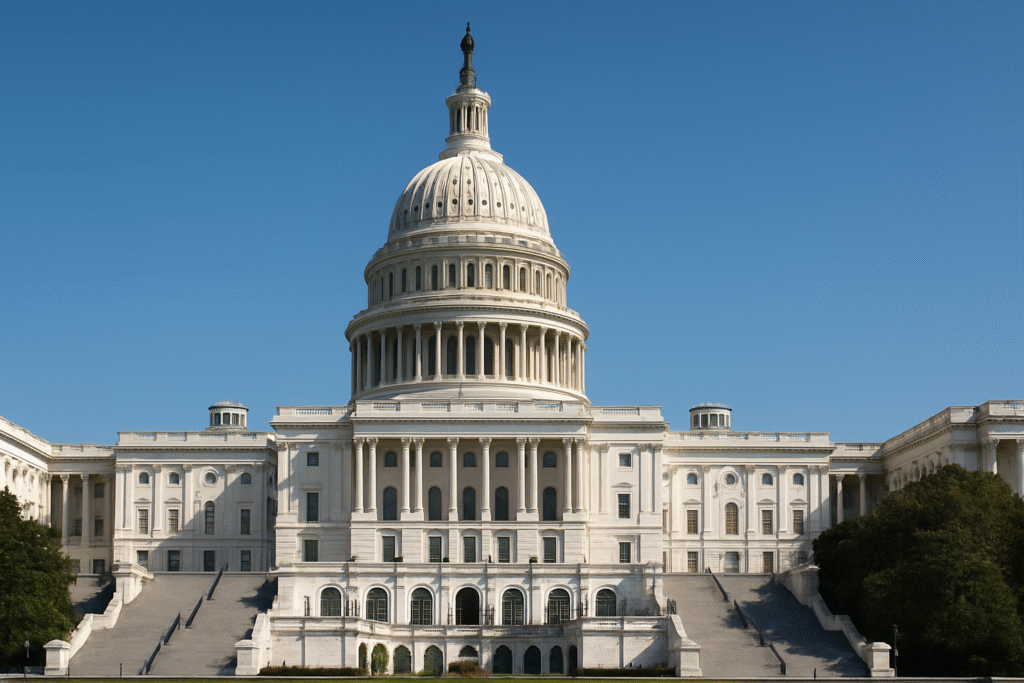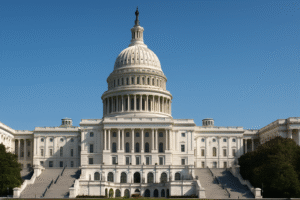Duration & Credit Pulse
Executive Summary
Bottom Line: The Federal Reserve's October 29 FOMC meeting delivered a 25 basis point rate cut to 3.75-4.00%, though Chair Powell's cautious forward guidance—indicating a December cut is "not a foregone conclusion"—contributed to higher Treasury yields, with the 10-year rising 8 basis points to 4.08% for the week. The 10-2 FOMC vote revealed differing views on the appropriate policy path given limited economic data availability due to the government shutdown. Credit spreads remained compressed, with investment grade at 78 basis points despite elevated policy uncertainty, suggesting continued search for yield dynamics.
Duration Dashboard
| Maturity | October 26, 2025 | November 2, 2025 | Weekly Δ | 5-Year Percentile |
|---|---|---|---|---|
| 2-Year | 3.48% | 3.58% | +9 bp | 40th %ile (middle range) |
| 5-Year | 3.61% | 3.69% | +8 bp | 48th %ile (middle range) |
| 10-Year | 4.00% | 4.08% | +8 bp | 63rd %ile (middle range) |
| 30-Year | 4.59% | 4.65% | +6 bp | 82nd %ile (elevated) |
Key Technical Indicators
Treasury Curve Shifts Higher Post-FOMC
Curve Analysis: Treasury yields moved higher in a relatively parallel shift following the FOMC October 2025 meeting and subsequent guidance suggesting a more measured pace of potential rate adjustments. The 2-year yield increased 9 basis points to 3.58% while the 30-year added 6 basis points to 4.65%, maintaining the 2s30s spread near 107 basis points. The 30-year's position at the 82nd percentile of its 5-year range indicates relative elevation in long-term yields, potentially reflecting term premium normalization considerations and the scheduled conclusion of quantitative tightening on December 1.
The FOMC's October 29 decision to cut rates 25 basis points reflected divergent views within the Committee, with Governor Miran preferring 50 basis points of easing while Kansas City's Schmid favored maintaining current levels. Powell's press conference comments that December is "not a foregone conclusion" contributed to upward pressure on Treasury yields across the curve. The 10-year yield's move to 4.08% places it at the 63rd percentile of its 5-year range—within the middle range but trending higher as markets adjust expectations for a more gradual easing cycle.
Credit Pulse
| Metric | October 26, 2025 | November 2, 2025 | Weekly Δ | 5-Year Percentile |
|---|---|---|---|---|
| IG OAS | 71 bp | 78 bp | +7 bp | 33rd %ile (middle range) |
| HY OAS | 269 bp | 270 bp | +1 bp | 18th %ile (low) |
| VIX Index | 16.37 | 17.44 | +1.07 | 43rd %ile (middle range) |
Credit markets maintained relative stability despite the shift in Fed communication, with investment-grade spreads widening a modest 7 basis points to 78bp—remaining in the lower third of the 5-year range at the 33rd percentile. High-yield spreads were essentially unchanged, tightening 1 basis point to 270bp at the 18th percentile, suggesting continued demand for yield in a low default environment. The modest divergence between compressed spreads and rising policy uncertainty may warrant monitoring for potential repricing into year-end.
Primary market and rating migration dynamics: Corporate issuance decelerated from September's record $226 billion pace as issuers adopted a wait-and-see approach ahead of the FOMC meeting. Year-to-date issuance reached $1.736 trillion through September, up 5.9% year-over-year, with Q3 net issuance of $121 billion after accounting for maturities. The fallen angel watchlist remains manageable but warrants monitoring: Paramount Global (Baa3/negative), Warner Bros Discovery, Charter Communications, and select commercial real estate names represent $40-60 billion of potential downgrades per Barclays estimates. Boeing's successful equity raise and strike resolution removed immediate downgrade pressure, though S&P maintains a negative outlook. The October default count of 14 globally (11 US) pushed the trailing 12-month speculative-grade rate to 4.4%, with 50% taking the form of distressed exchanges rather than payment defaults—suggesting workout solutions remain available despite tighter financial conditions.
Fund flows sustain technical bid: US bond funds attracted $4.91 billion for the week ending October 29 (fourth consecutive weekly inflow), with notable rotation dynamics. Short-to-intermediate investment-grade funds led with $1.72 billion of inflows, while general taxable fixed income absorbed $1.47 billion. Significantly, short-term government/Treasury funds experienced $1.23 billion of outflows, indicating active rotation from government paper into credit. Sector performance showed meaningful dispersion: Financials outperformed on regulatory relief expectations, Energy gained 0.64% despite oil at $60.88/barrel on data center power demand themes, while Technology underperformed at -0.32% amid tariff concerns. The consumer sector shows stress with 16 defaults year-to-date, concentrated in lower-income facing businesses.
Technical Market Dynamics – Quantitative Tightening Conclusion
The Federal Reserve's scheduled conclusion of quantitative tightening on December 1, 2025 represents a significant technical shift for fixed income markets. After reducing its balance sheet by $2.2 trillion over 3.5 years—from approximately 35% of GDP to 21%—the Fed will freeze holdings at roughly $6.6 trillion and transition to reinvestment mode. The cessation of $35 billion monthly MBS runoff removes a consistent source of duration supply while redirecting principal payments into Treasury bill purchases.
Global Central Bank Divergence – Policy Paths Separate
| Central Bank | Current Rate | October Action | Key Consideration |
|---|---|---|---|
| Federal Reserve | 3.75-4.00% | Cut 25bp (10-2 vote) | December cut "not foregone," data constraints |
| ECB | 2.00% | Hold (3rd pause) | Inflation near 2% target, monitoring growth |
| Bank of Japan | 0.50% | Hold (7-2 vote) | Two dissents for 75bp, yen near intervention |
| PBOC | Various | "Moderately loose" | Supporting growth amid property challenges |
The divergence in global monetary policy intensified during the week, with the Fed's cautious easing contrasting sharply with accommodative stances elsewhere. The European Central Bank maintained its deposit rate at 2.00% for a third consecutive meeting, citing inflation "close to target" while acknowledging trade and geopolitical uncertainties. The Bank of Japan's 7-2 vote revealed internal pressure for tightening, with dissenting members Takata and Tamura advocating for 0.75% rates. This policy divergence supported the Dollar Index at 99.72, creating favorable conditions for US fixed income despite rising yields, as currency-hedged returns remain attractive for foreign investors managing approximately $8 trillion in US debt holdings.
US Macroeconomic Assessment – Policy Implementation Amid Data Constraints
The week of October 26 - November 2 presented unique challenges for monetary policy implementation as the Federal Reserve conducted its meeting with limited access to traditional economic indicators. The ongoing government shutdown resulted in the absence of October employment data and disrupted standard data collection processes, requiring reliance on alternative indicators. ADP's weekly pulse indicated approximately 14,250 jobs added in the four weeks ending October 11, while the previously released September report showed 22,000 positions created—representing notable deceleration in employment growth.
Trade developments provide modest relief: The October 30 US-China summit in Busan, South Korea marked a notable shift in trade dynamics, delivering the first tariff reduction in eighteen months. The agreement reduced the "fentanyl tariff" on Chinese goods from 20% to 10%, bringing overall Chinese tariff rates from 57% to 47%. China reciprocated by postponing rare earth export controls originally scheduled for November 8 implementation, while also committing to purchase 180,000 metric tons of US soybeans through COFCO. Despite this progress, Yale Budget Lab calculations show the effective US tariff rate remains at 17.9%—among the highest levels since 1934, generating approximately $2.2 trillion in revenue over 2026-35 after accounting for a projected 0.5% long-run GDP impact. These trade dynamics continue to influence the Fed's inflation considerations, with sector effects varying significantly: manufacturing +3.2%, construction -4.0%, agriculture -0.7%.
Consumer confidence shows modest decline: The Conference Board's October consumer confidence index registered a modest decrease, indicating some caution regarding economic prospects. The absence of official employment data may be contributing to uncertainty among households and businesses in assessing economic conditions. Weekly jobless claims data from state systems improved to 221,000, though federal unemployment compensation applications increased to four-year highs as government efficiency initiatives proceeded with workforce adjustments.
Balance sheet policy transition approaches: The Fed's announcement that quantitative tightening concludes December 1 represents a notable technical shift following a $2.2 trillion reduction over 3.5 years. The end of $35 billion monthly MBS runoff and transition to Treasury bill reinvestment will alter market dynamics as the Treasury addresses year-end funding requirements.
Treasury auction dynamics signal absorption challenges: The week's auction cycle revealed developing stress in duration demand. The $69 billion 2-year note auction attracted a 2.59 bid-to-cover ratio, modestly above the prior month but below the 10-auction average of 2.61. More concerning, the $44 billion 7-year note auction on October 28 showed deteriorating demand with a 2.46 bid-to-cover ratio—14 basis points below the 2.60 average and the weakest participation since mid-summer. The high yield of 3.790% and tepid institutional participation suggest investors are becoming selective about intermediate duration exposure. Direct bidders took 75.2% of their 2-year bids versus only 8.3% acceptance for primary dealers, indicating foreign and domestic institutional buyers are cherry-picking the curve rather than providing consistent support across maturities.
Federal Reserve Policy Outlook – December 2025
Chair Powell's October 29 press conference adjusted market expectations regarding the pace of potential easing. His observation that "there were strongly differing views about how to proceed in December" and that another cut is "not a foregone conclusion—far from it" shifted December rate cut probability from approximately 98% to 67% according to fed funds futures. The 10-2 FOMC vote, with dissents favoring both additional easing and no change, illustrates the range of views regarding the appropriate balance between employment support and price stability objectives given current data limitations.
The limited availability of economic data due to the government shutdown presents challenges for the December 17-18 FOMC meeting. Should data constraints persist through November, the Committee would lack standard employment reports and potentially face data quality issues in inflation metrics due to collection interruptions. Powell's acknowledgment of operating with reduced visibility reflects the practical difficulties of conducting forward-looking monetary policy with incomplete backward-looking validation. Current market pricing suggests 2-3 additional adjustments through 2026, representing a moderation from earlier expectations.
Week Ahead: Key Economic Releases and Events
Treasury Supply: $125 billion (3Y, 10Y, 30Y auctions Nov 4-6)
| Date | Event | Consensus/Details |
|---|---|---|
| Ongoing | Shutdown Resolution | Would release October NFP (ADP est: 14,250) |
| Nov 4-6 | Treasury Auctions | $125bn supply, watch foreign participation |
| Nov 7 | Bank of England | Expected hold at 4.75% (UK CPI: 1.7%) |
| Nov 8 | China Trade Data | Exports +5.2% y/y, Imports +3.9% y/y exp |
| Nov 8 | U Michigan Sentiment | Preliminary Nov, shutdown impact key |
- VIX at 43rd percentile versus HY spreads at just 18th percentile represents unusual divergence
- 7-year Treasury auction tail and weak 2.46 bid-to-cover suggests duration absorption concerns
- Investment grade at 33rd percentile despite 46% BBB composition and $40-60bn fallen angel pipeline
- MOVE Index at 66-69 versus elevated FOMC uncertainty indicates potential volatility mispricing
- 30-year Treasury at 82nd percentile while IG spreads near multi-year tights
Positioning Implications for Fixed Income Investors
The combination of adjusted Fed communication, ongoing data constraints, and compressed credit spreads presents considerations for duration and credit positioning into year-end. Treasury yields at mid-range percentiles suggest potential for further adjustment should December bring a policy pause, though the 30-year's position at the 82nd percentile indicates some term premium has already been incorporated. The 2s10s spread at 50 basis points remains below historical averages, potentially indicating further steepening prospects or embedded recession expectations.
Credit market positioning warrants selective approach: With IG spreads at the 33rd percentile and HY at the 18th percentile of 5-year ranges, current valuations offer limited cushion for potential volatility. Rating agencies have identified $40-60 billion of potential fallen angel candidates, which could create technical pressure should rates remain elevated for an extended period. However, continued fund inflows—$4.91 billion into US bond funds for the week—and steady foreign demand suggest technical support remains in place. The scheduled conclusion of quantitative tightening on December 1 removes a technical consideration while 2026 refinancing requirements approach, suggesting a balanced approach to credit exposure may be appropriate. Maintaining flexibility to respond to potential year-end developments while recognizing that global central bank accommodation may continue supporting risk assets appears prudent.
Frequently Asked Questions
What did the FOMC decide at its October 2025 meeting?
The Federal Reserve reduced interest rates by 25 basis points to a range of 3.75-4.00% on October 29, 2025. The decision reflected differing views within the Committee, evidenced by a 10-2 vote. Chair Powell indicated that a December adjustment is "not a foregone conclusion," shifting market probability for additional easing this year from approximately 98% to 67%.
Why are Treasury yields rising despite the Fed cutting rates?
Treasury yields increased 6-9 basis points across the curve as Powell's forward guidance indicated a potentially slower pace of future adjustments than markets had previously anticipated. The 10-year yield reached 4.08% as investors adjusted expectations for the terminal rate and considered the Fed's challenge of balancing policy objectives with inflation remaining at 3.0%, above the 2% target.
How is the government shutdown affecting Fed policy decisions?
The government shutdown has limited the Fed's access to standard economic indicators, including the October employment report and potentially affecting CPI data collection. This has required the Committee to rely on alternative data sources such as ADP employment estimates and state-level jobless claims. Powell acknowledged the challenges of operating with reduced data visibility during this period of policy adjustment.
Should investors be concerned about credit spreads at historic lows?
Investment-grade spreads at 78 basis points and high-yield at 270 basis points represent compressed valuations relative to historical ranges, trading at the 33rd and 18th percentiles respectively of 5-year distributions. These levels suggest limited compensation for potential volatility, though continued fund flows and stable default expectations provide technical support. Investors may wish to consider the risk-reward dynamics given current valuations and potential for spread normalization.
Key Articles of the Week
-
Fed Cuts Rates Quarter-Point But Powell's Tone Jolts MarketsBloombergOctober 29, 2025Read Article
-
Powell Says December Rate Cut 'Not a Foregone Conclusion'CNBCOctober 29, 2025Read Article
-
Powell Cuts Rates in the Dark With No Jobs DataFortuneOctober 29, 2025Read Article
-
Credit Spreads Hover Near Historic Lows Despite Market UncertaintyFinancial ContentOctober 27, 2025Read Article
-
US Treasury Yields Rise as Investors Await Fed DecisionCNBCOctober 28, 2025Read Article
-
Consumer Confidence Dips Modestly in OctoberPBS NewsOctober 28, 2025Read Article
-
10-Year Yield Touches 4.10% Following Cautious FedCNBCOctober 31, 2025Read Article
-
Treasury Yields Snapshot: October 31, 2025ETF TrendsOctober 31, 2025Read Article







